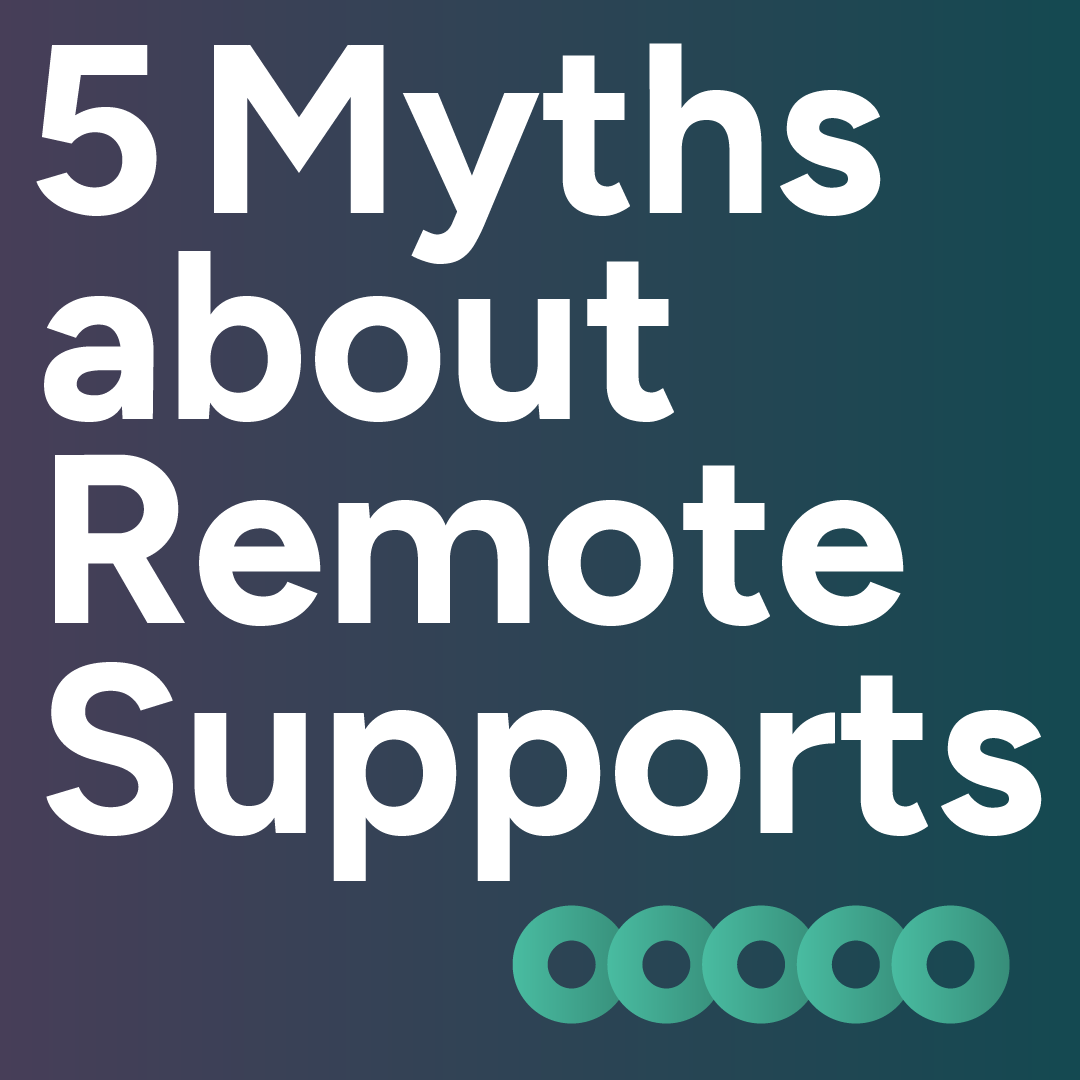




Myth 1: Remote Supports is Only for Overnights
Many individuals benefit from using remote supports during the daytime. The popular conception of remote supports stems from the common practice of starting an individual with overnight remote supports to get them acclimated to the service. Twenty years ago, when remote supports was a brand-new service, many individuals, teams, and providers were only comfortable using remote supports during the low-activity overnight periods. However, in the years since, those same people have come to understand the benefits of using remote supports during the daytime. Remote supports can assist people in both active and inactive periods of the day. In fact, some of the most successful implementations of remote supports are in situations where individuals, using remote supports, can accomplish more during the day because there’s more opportunity to make self-determined choices to complete tasks.
Myth 2: Remote Supports Has a Steep Learning Curve
Despite debuting nearly twenty years ago, many people still aren’t familiar with remote supports. That’s the case with any new type of service, especially as it relates to the people we care about most. But many of those who took the leap to try out a new service found it approachable. The core concept of remote supports can be summed up in one sentence: using technology to connect individuals to staff at a different location.
The sheer number of technology devices that could be used in a remote supports system and the proximity of remote supports to other assistive technology solutions can seem daunting to unpack, but once one understands the core concept, the rest of the details are ironed out in person-centered discussions about serving a specific individual. You don’t need to know everything about remote supports, just how it’s going to help the person(s) you serve.
Myth 3: Only “High-Functioning” People Can Benefit from Remote Supports.
The origin of this myth is similar to that of Myth 1. When remote supports began two decades ago, many people were understandably hesitant to implement it. What helped for many was to try it with individuals who were “higher-functioning,” as the perceived risks of the service were lower. The impulse to start with individuals who have determined they want greater independence in the home is not a bad one.
However, if we limit our thinking only to those individuals we consider as “higher-functioning,” we’re taking away the opportunity for all the other individuals we serve to try remote supports and receive the same benefits. Remote supports has provided safe and effective support for people of all abilities.
Myth 4: Remote Supports Replaces DSPs
Remote supports do substitute DSPs during certain hours for certain people. But overall, the remote support professionals performing remote supports augment the DSP workforce.
How is this possible? Consider a hypothetical provider agency facing staffing shortages. COVID and stagnant wages have made attracting talent difficult. Managers are working direct-care shifts and turnover is rampant. If this agency decided to evaluate some of the people they serve for remote supports and found that many were suitable, then implementing remote supports would not only be beneficial for the individuals receiving the service, but for the rest of the agency as well. DSPs who formerly worked shifts with these individuals could be reallocated to others who require in-person services. Managers can go back to management. Ultimately, integration with remote supports allows for agencies to serve more people better.
Myth 5: Remote Supports Aren’t Safe
As we’ve mentioned before, remote supports has been around for two decades. During that time, NOSS has developed a substantial system of redundancies and safety features to ensure that remote supports are safe.
Here are just a few examples:
• Generator and battery backups at the main remote supports facility
• Battery backups on devices in the home
• Primary and backup connections on devices in the home
• Redundant phone and internet connections at the main remote supports facility
• We even have another backup remote supports facility in case of a severe emergency.
That’s not all, in addition to the technical safety features, we also have comprehensive backup plans for individuals. These include contact lists for backup responders (whether they’re family or provider staff) who can be dispatched to the home to physically assist the individual. Who the responder will be is determined during the person-centered planning process, so the backup is established prior to services beginning.